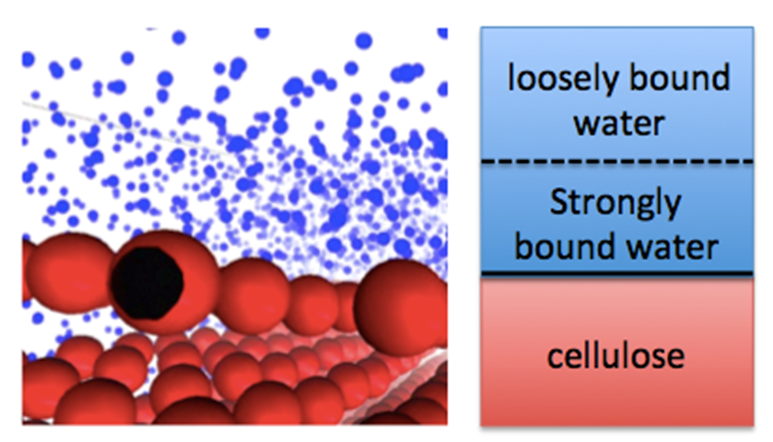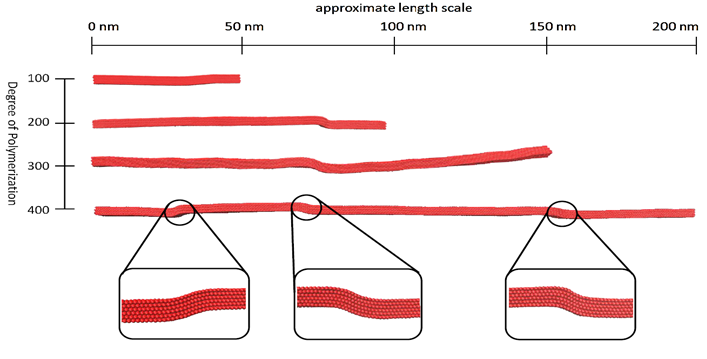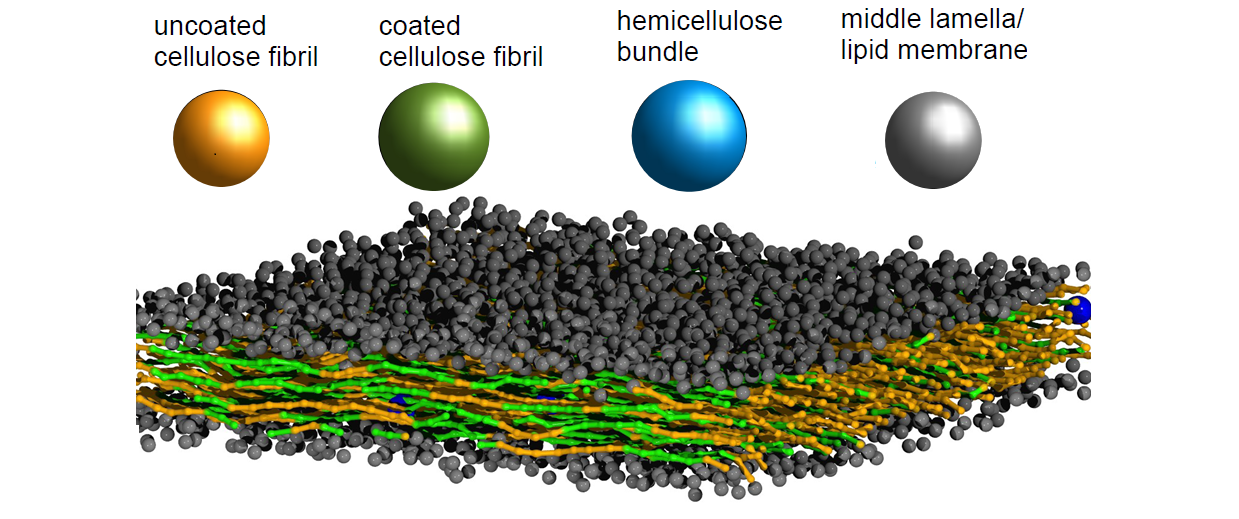Margaret Kowalik, Sarah Kimele, and Hui Yang
Plant cell walls play vital roles in plant morphogenesis, cell expansion and intercellular transportation. To understand the biological functions better, we systematically investigate the structures and dynamics inside the cell wall. Structurally, cell wall is composed of several biopolymers, including cellulose (~30%), hemicelluloses (~30%) and pectins (~40%). The biopolymers interact and compose a thin cell wall, which provides the mechanical strength of plant.

There are several wall models that present how the biopolymers are arranged in cell wall, but none of them have direct evidence. We performed small angle neutron scattering (SANS) on near-native plant cell walls, which allows us determine the structure of each biopolymer in the wall. The figure above represents what we found with our SANS experiments. To complement SANS, we use quasi-elastic neutron scattering (QENS) to investigate the mobility of water and biopolymers in the cell wall. We found the key factor determining the dynamics of the entire cell wall is the water content and the extent of biopolymer cross-linking. Also, water above cellulose could be divided into 2 layers as shown in figure below.
We also use simulation techniques (both atomistic and coarse-grained) to develop a better understanding of each structural component and aiming to build a model that describes the load-bearing network of primary cell wall. By increasing our fundamental knowledge of the physical structure of cell walls, we provide a scientific basis for improved methods of converting biomass into transportation fuels.

Coarse-grained simulation snapshots of 100-400 glucose-units long cellulose microfibrils.
Many important features of plant cell walls are at meso-scale (10 nm – 1μm) and chemical analysis using existing experimental tools is challenging. We proposed a coarse-grained model of primary plant cell wall that incorporates relevant physical wall components (for example cellulose microfibrils, hemicellulose in different configurations and pectin/water gels), yet is coarse enough to evaluate mechanical properties. The usefulness of such a model is to learn the controlling factors for experimental observations. This model can return the interaction strengths required to match mechanical data.

A schematic representation of the coarse-grained beads in a model of primary plant cell wall and a simulation snapshot of the proposed Mesoscale Model.
How Cellulose Elongates – A QM/MM Study of the Molecular Mechanism of Cellulose Polymerization in Bacterial CESA
The catalytic mechanism of bacterial cellulose synthase was investigated by using a hybrid quantum mechanics and molecular mechanics (QM/MM) approach. The Michaelis complex model was built based on the X-ray crystal structure of the cellulose synthase subunits BcsA and BcsB containing a uridine diphosphate molecule and a translocating glucan. Our study identified a SN-2-type transition structure corresponding to the nucleophilic attack of the non-reducing end O4 on the anomeric carbon C1, the breaking of the glycosidic bond C1-O1, and the transfer of proton from the non-reducing end O4 to the general base D343. The activation barrier found for this SN-2-type transition state is 68 kJ/mol. The rate constant of polymerization is estimated to be ~8.0 s-1 via transition state theory. A similar SN-2-type transition structure was also identified for a second glucose molecule added to the growing polysaccharide chain, which aligned with the polymer 180 degree rotated compared to the initially added unit. This study provides detailed insights into how cellulose is extended by one glucose molecule at a time and how the individual glucose units align into cellobiose repeating units.
Figure: QMMM-BcsA-mechanism-animation.
Figure: QMMM-BcsA-toc.
For more information visit www.lignocellulose.org




